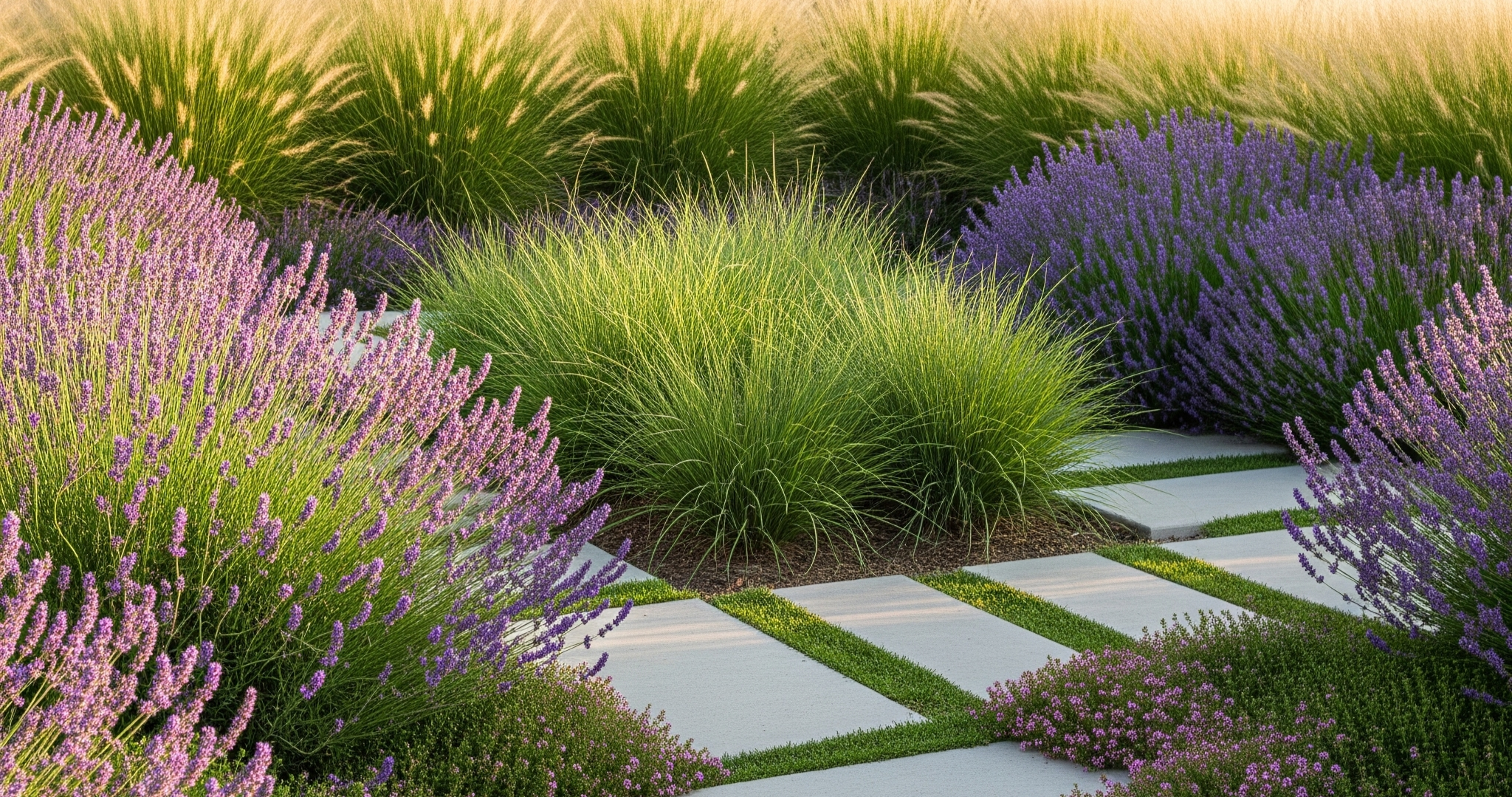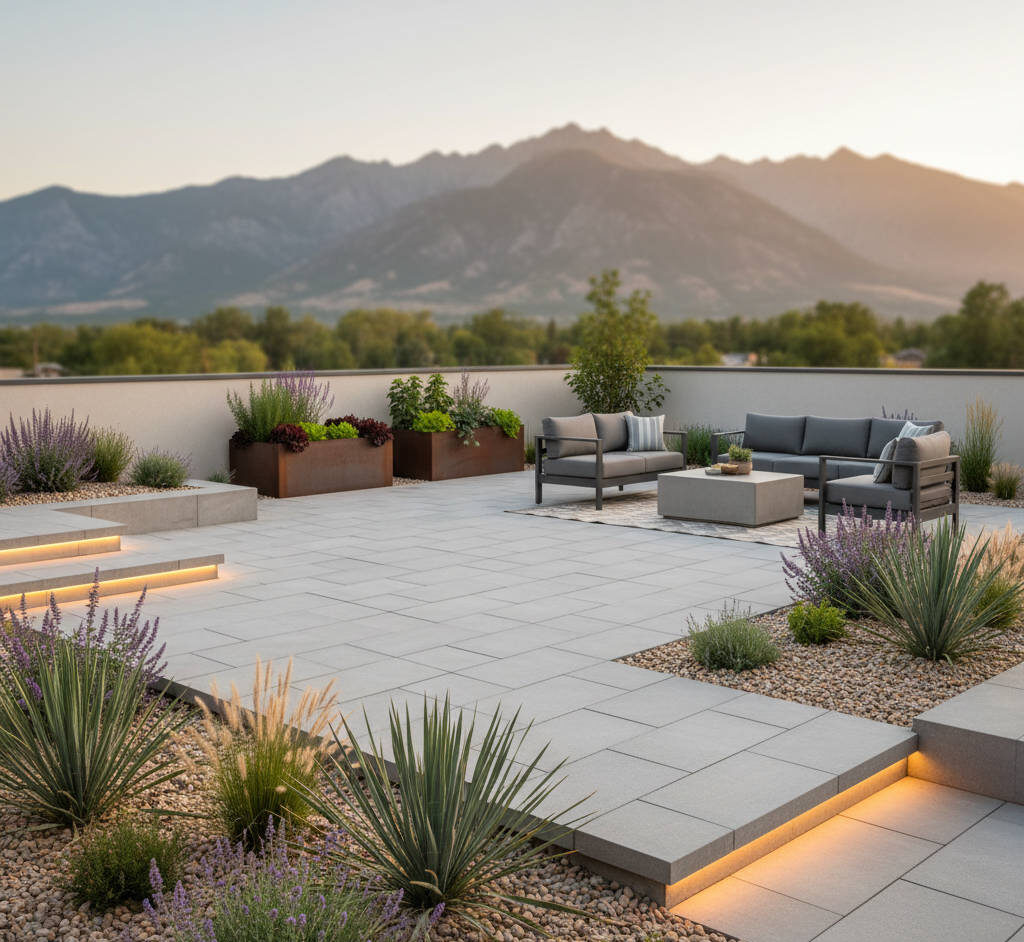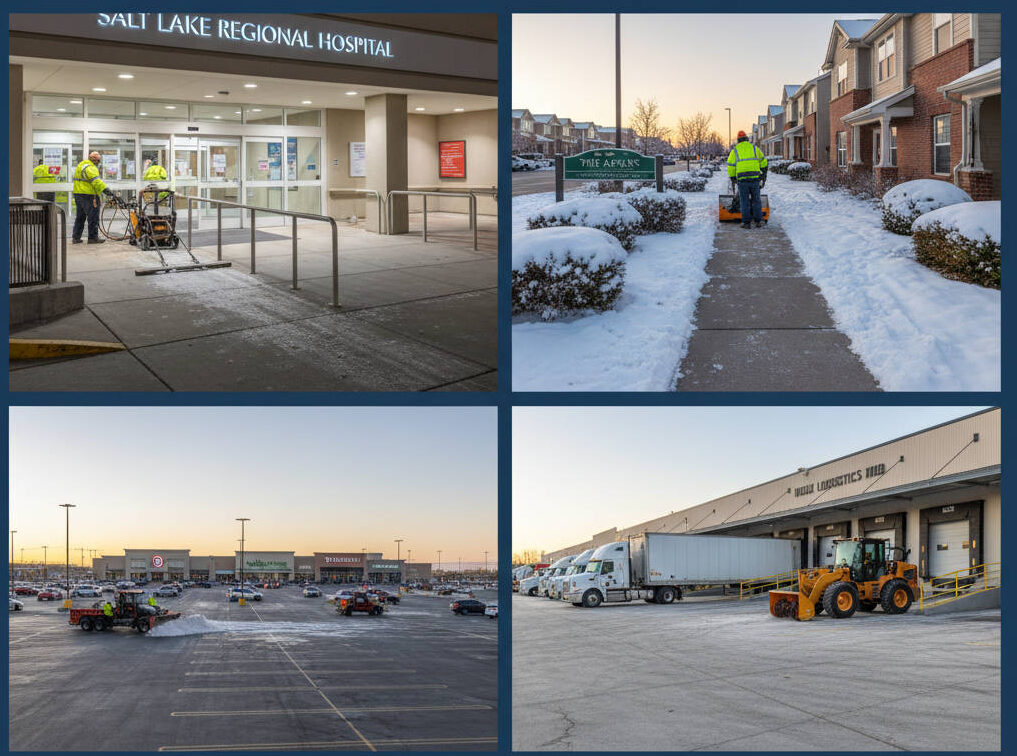If you’ve lived in Salt Lake City for more than a season or two, you’ve probably experienced the dreaded mid-summer lawn death—that moment when your once-green yard turns brown and patchy seemingly overnight.
This isn’t just bad luck. Utah’s climate poses unique challenges that make traditional lawns hard (and expensive) to maintain. But the good news? There are beautiful, low-maintenance alternatives that thrive here without draining your water bill or weekend hours.
The Harsh Truth About Utah Summers
Salt Lake City summers are hot, dry, and unforgiving—often hitting triple digits with little to no rainfall. Traditional Kentucky bluegrass lawns, while popular, require heavy watering and can’t tolerate prolonged drought stress. Combine that with clay-heavy soils and intense sun, and you’ve got a recipe for crispy turf.
Top Reasons Your Lawn Dies Every Summer
1. Water Restrictions and Drought
Even with sprinklers, many lawns don’t get enough consistent hydration during peak heat. Water restrictions make it harder to keep turf alive.
2. Heat Stress
When soil temperatures exceed 85°F, grass growth slows or stops, leading to brown patches.
3. Soil Compaction
Years of foot traffic compress soil, preventing roots from accessing air and water.
4. Wrong Grass Type
Cool-season grasses dominate Salt Lake City lawns, but they naturally go dormant in summer heat.
What to Plant Instead in Salt Lake City
Native Grasses
- Buffalograss: Drought-tolerant, soft underfoot, and naturally low-growing.
- Blue Grama: Resilient and ideal for low-water landscapes.
Ornamental Grasses
- Feather Reed Grass: Tall, elegant, and low-maintenance.
- Little Bluestem: Offers stunning fall color and heat tolerance.
Ground Covers
- Creeping Thyme: Fragrant, hardy, and bee-friendly.
- Sedum: Succulent-like ground cover with minimal watering needs.
Drought-Tolerant Perennials
- Lavender: Thrives in Utah’s sun and adds a pop of purple.
- Penstemon: Native to the region and attracts pollinators.
The Bonus of Switching
Replacing high-maintenance turf with climate-appropriate plants doesn’t just save water—it also:
- Reduces your mowing and fertilizing needs.
- Lowers long-term landscaping costs.
- Enhances biodiversity in your yard.

Ready to say goodbye to summer lawn burnout?
Contact Millburn Lawn & Landscape in Salt Lake City for custom designs using drought-tolerant plants that keep your yard looking beautiful year-round—without the constant upkeep.
FAQ
Q: Can I keep part of my lawn and still save water?
A: Yes—many homeowners keep a small grass section for recreation and replace the rest with drought-tolerant plants.
Q: Are artificial lawns a good option?
A: For some, yes. They eliminate watering needs, though they can get hot in summer sun.
Q: Will native plants really look as good as a lawn?
A: Absolutely—when designed well, they can be more vibrant and visually interesting than turf.
Q: How soon can I replace my lawn?
A: You can start as soon as temperatures are favorable for planting—spring and fall are best.



